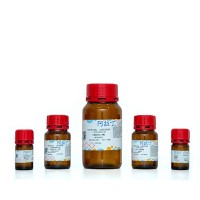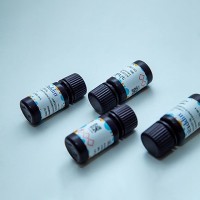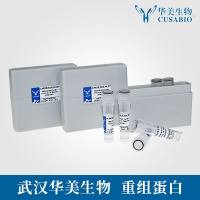cDNA Expression Cloning in Mammalian Cells
互联网
- Abstract
- Table of Contents
- Materials
- Figures
- Literature Cited
Abstract
This unit contains protocols for expression cloning in mammalian cells. Either calcium phosphate? or liposome?mediated transfection of mammalian cells, or virus infection and liposome?mediated transfection are used to screen pools derived from a cDNA library. cDNA pools are prepared for cloning from library?transformed E. coli grown in liquid culture medium or on antibiotic?containing selection plates. Results of screening assays for expression can be detected using autoradiography of dishes of cultured cells to identify clones, direct visualization of radiolabeled cells on emulsion?coated and developed chamber slides, detection and quantification of gene activity by a functional (transport) assay with scintillation counting, or detection using a filter?based assay for binding of radioligand to membranes or whole cells. The most critical step of any cDNA cloning project is the establishment of the screening protocol. Therefore, the bioassay for the gene product must be established prior to executing any of these protocols, including construction of the cDNA library.
Table of Contents
- Basic Protocol 1: Expression of Cloned cDNA Transfected into Mammalian Cells
- Basic Protocol 2: Recombinant Vaccinia Virus Infection and Liposome‐Mediated Transfection of Mammalian Cells
- Support Protocol 1: Preparing cDNA Pools by Culture in Antibiotic Selection Medium
- Support Protocol 2: Preparing cDNA Pools by Plating onto Antibiotic Selection Plates
- Support Protocol 3: Using Autoradiography to Detect Gene Expression
- Support Protocol 4: Using Nuclear Emulsion–Coated Chamber Slides to Detect Gene Expression
- Support Protocol 5: Transport Activity Assay to Detect and Quantify Activity of Expressed Genes
- Support Protocol 6: Radioligand Binding to Membranes or Whole Cells to Detect Gene Expression
- Reagents and Solutions
- Commentary
- Figures
- Tables
Materials
Basic Protocol 1: Expression of Cloned cDNA Transfected into Mammalian Cells
Materials
Basic Protocol 2: Recombinant Vaccinia Virus Infection and Liposome‐Mediated Transfection of Mammalian Cells
Materials
Support Protocol 1: Preparing cDNA Pools by Culture in Antibiotic Selection Medium
Materials
Support Protocol 2: Preparing cDNA Pools by Plating onto Antibiotic Selection Plates
Materials
Support Protocol 3: Using Autoradiography to Detect Gene Expression
Materials
Support Protocol 4: Using Nuclear Emulsion–Coated Chamber Slides to Detect Gene Expression
Materials
Support Protocol 5: Transport Activity Assay to Detect and Quantify Activity of Expressed Genes
Materials
Support Protocol 6: Radioligand Binding to Membranes or Whole Cells to Detect Gene Expression
Materials
|
Figures
-
Figure 4.8.1 Flow chart for expression cloning in mammalian cells. Filter binding assays should be used when there are large numbers of very low‐complexity pools to be analyzed; autoradiography may be used for smaller numbers of high‐complexity pools. View Image
Videos
Literature Cited
| Literature Cited | |
| Alsobrook, J.P. and Stevens, C.F. 1988. Cloning the calcium channel. Trends Neurosci. 11:1‐2. | |
| Blakely, R.D., Clark, J.A., Rudnick, G., and Amara, S.G. 1991. Vaccinia‐T7 RNA polymerase expression system: Evaluation for the expression cloning of plasma membrane transporters. Anal. Biochem. 194:302‐308. | |
| Borowsky, B. and Hoffman, B.J. 1995. Neurotransmitter transporters: Molecular biology, function, and regulation. Int. Rev. Neurobiol. 38:139‐199. | |
| Erickson, J.D., Eiden, L.E., and Hoffman, B.J. 1992. Expression cloning of a reserpine‐sensitive vesicular monoamine transporter. Proc. Natl. Acad. Sci. U.S.A. 89:10,993‐10,997. | |
| Evans, C.J., Keith, D.E. Jr., Morrison, H., Magendzo, K., and Edwards, R.H. 1992. Cloning of a delta opioid receptor by functional expression. Science 258:1952‐1955. | |
| Fuerst, T.R., Niles, E.G., Studier, F.W., and Moss, B. 1986. Eukaryotic transient‐expression system based on recombinant vaccinia virus that synthesizes bacteriophage T7 RNA polymerase. Proc. Natl. Acad. Sci. U.S.A. 83:8122‐8126. | |
| Hayat, M.A. 1981. Fixation for Electron Microscopy. Academic Press, New York. | |
| Hediger, M.A., Coady, M.J., Ikeda, T.S., and Wright, E.M. 1987. Expression cloning and cDNA sequencing of the Na+/glucose co‐transporter. Nature 330:379‐381. | |
| Hoffman, B.J. 1994. Expression cloning of the serotonin transporter: A new way to study antidepressant drugs. Pharmacopsychiatry 27:16‐22. | |
| Hoffman, B.J., Mezey, E., and Brownstein, M.J. 1991. Cloning of a serotonin transporter affected by antidepressants. Science 254:579‐580. | |
| Julius, D., MacDermott, A.B., Axel, R., and Jessell, T.M. 1988. Molecular characterization of a functional cDNA encoding the serotonin 1c receptor. Science 241:558‐564. | |
| Kaupmann, K., Huggel, K., Heid, J., Flor, P.J., Bischoff, S., Mickel, S.J., McMaster, G., Angst, C., Bittiger, H., Froestl, W., and Bettler, B. 1997. Expression cloning of GABAB receptors uncovers similarity to metabotropic glutamate receptors. Nature 386:239‐246. | |
| Liu, Y., Peter, D., Roghani, A., Schuldiner, S., Prive, G.G., Eisenberg, D., Brecha, N., and Edwards, R.H. 1992. A cDNA that suppresses MPP+ toxicity encodes a vesicular amine transporter. Cell 70:539‐551. | |
| Lubbert, H., Hoffman, B.J., Snutch, T.P., van Dyke, T., Levine, A.J., Hartig, P.R., Lester, H.A., and Davidson, N. 1987. cDNA cloning of a serotonin 5‐HT1C receptor by electrophysiological assays of mRNA injected Xenopus oocytes. Proc. Natl. Acad. Sci. U.S.A. 84:4332‐4336. | |
| McManus, J.F.A. and Mowry, R.W. 1960. Staining Methods, Histologic and Histochemical. Harper and Row, New York. | |
| Morel, A., O'Carroll, A.M., Brownstein, M.J., and Lolait, S.J. 1992. Molecular cloning and expression of a rat V1a arginine vasopressin receptor. Nature 356:523‐526. | |
| Murphy, T.J., Alexander, R.W., Griendling, K.K., Runge, M.S., and Bernstein, K.E. 1991. Isolation of a cDNA encoding the vascular type‐1 angiotensin II receptor. Nature 351:233‐236. | |
| Pacholczyk, T., Blakely, R.D., and Amara, S.G. 1991. Expression cloning of a cocaine‐ and antidepressant‐sensitive human noradrenaline transporter. Nature 350:350‐354. | |
| Seeburg, P.H., Wisden, W., Verdoorn, T.A., Pritchett, D.B., Werner, P., Herb, A., Luddens, H., Sprengel, R., and Sakmann, B. 1990. The GABAA receptor family: Molecular and functional diversity. Cold Spring Harbor Symp. Quant. Biol. 55:29‐40. | |
| Snutch, T.P. 1988. The use of Xenopus oocytes to probe synaptic communication. Trends Neurosci. 11:250‐256. | |
| Usdin, T.B., Brownstein, M.J., Moss, B., and Isaacs, S.N. 1993. SP6 RNA polymerase containing vaccinia virus for rapid expression of cloned genes in tissue culture. Biotechniques 14:222‐224. | |
| Yamauchi, A., Uchida, S., Kwon, H.M., Preston, A.S., Robey, R.B., Garcia‐Perez, A., Burg, M.B., and Handler, J.S. 1992. Cloning of a Na+‐ and Cl− dependent betaine transporter that is regulated by hypertonicity. J. Biol. Chem. 267:649‐652. | |
| Key References | |
| Hoffman et al., 1991. See above. | |
| Use of emulsion autoradiography to clone the serotonin transporter by calcium phosphate transfection into COS cells and transport assays. | |
| Pacholcyzk et al, 1991. See above. | |
| Use of film autoradiography to clone the norepinephrine transporter by DEAE‐dextran transfection into COS cells, transport assays, and Hirt recovery of plasmid DNA. | |
| Kaupmann et al., 1997. See above. | |
| Use of film autoradiography to clone GABAB receptors by DEAE‐dextran transfection into COS cells starting with small pools of cDNAs. | |
| Murphy et al., 1991. See above. | |
| Use of binding assays to clone the angiotensin II receptor starting with very small (1000‐member) pools of cDNAs. |






